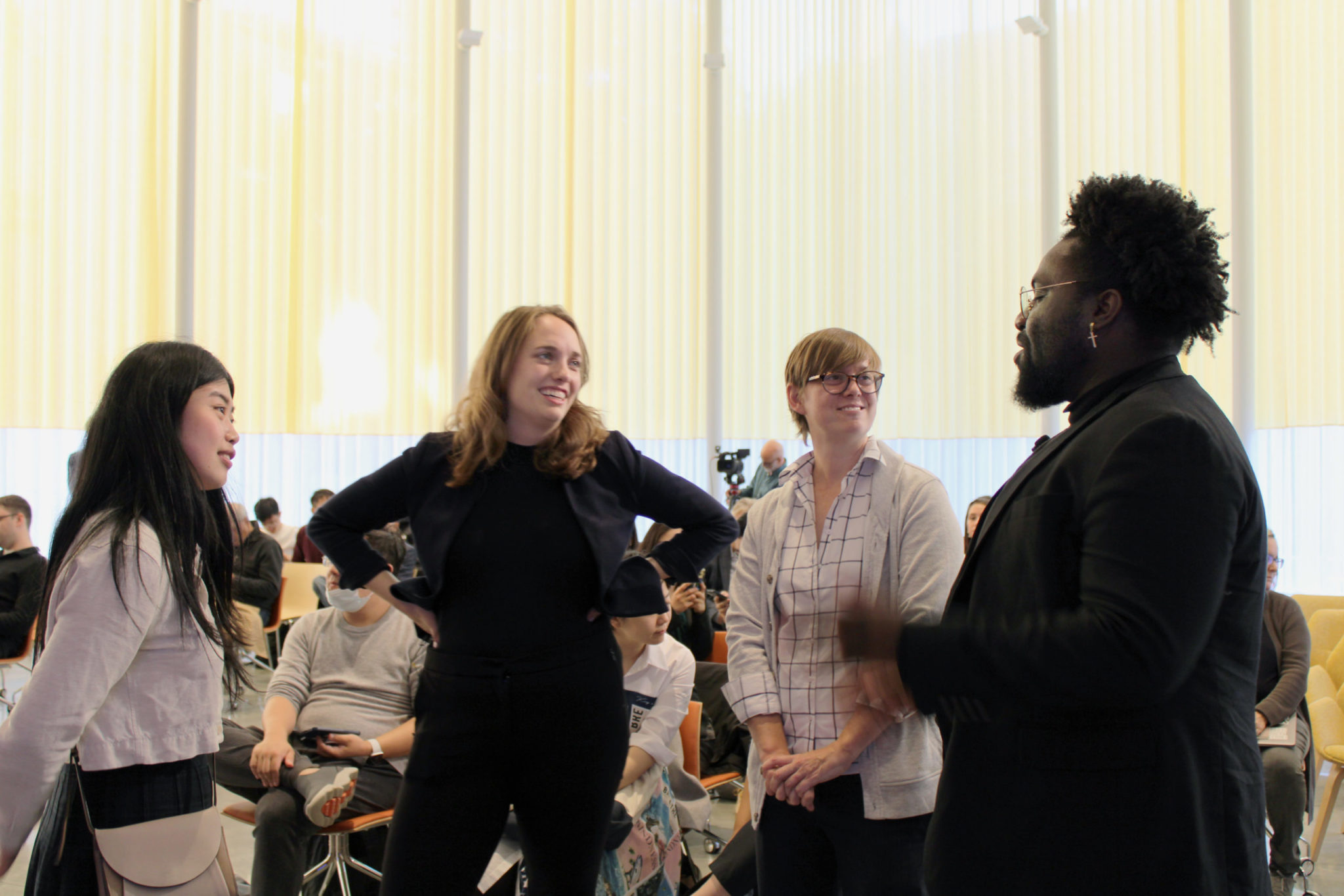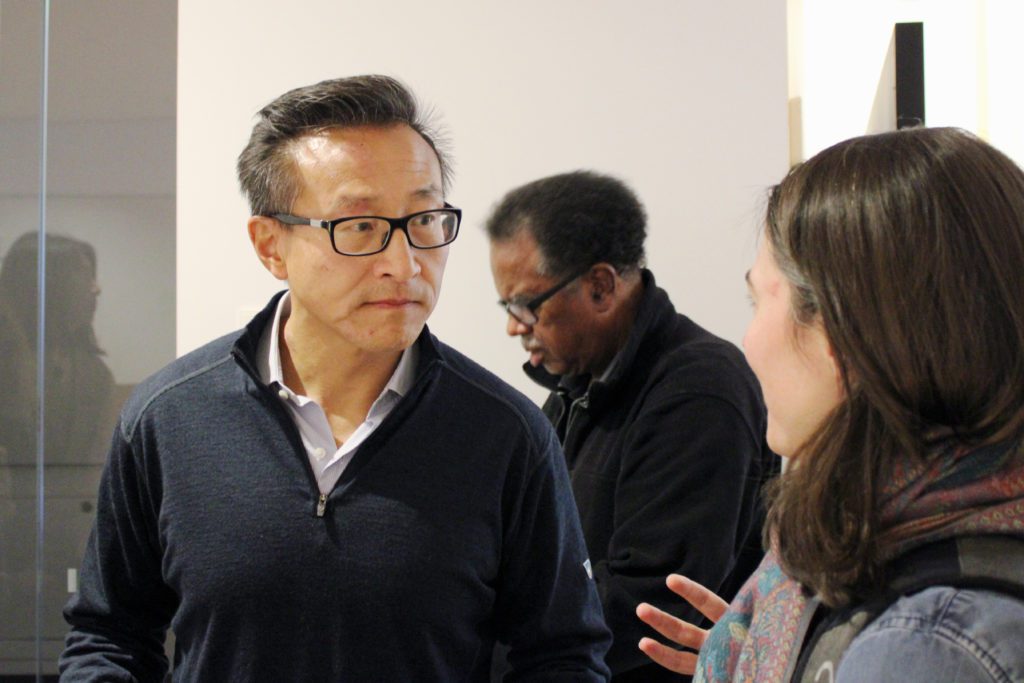
Genevieve Kim, Contributing Photographer
What does it mean to be a working artist and venture capitalist?
In conversation with Joseph Tsai ’86 LAW ’90 and Clara Wu Tsai on Tuesday at Tsai CITY, Frances Pollock ‘25 MUS and Sola Fadiran ‘22 DRA described their vision of a system that treats artists like entrepreneurs, giving them the agency and investment to pursue their passion projects.
The Midnight Oil Collective, a self-proclaimed “venture studio,” lets artists buy into each other — every artist is an investor, and every investor is an artist. Structurally, the company operates exactly like a traditional fund, selecting different projects to create a diverse portfolio and achieve a bottom line. The primary objective is thus first and foremost, profit.
But the real prize lies in the process. Each cohort of new projects is democratically elected, with every existing member granted a voice. For every step of the way thereafter, everyone is involved in everyone else’s business, helping each other find actors for their films, feedback on their scripts or access to other resources.
The collective is at its core a community, a support system for artists to best help each other tell their stories. It also self-maintains — critically — a standard of quality.
As Fadiran put it, “artists can identify craft,” and the “more diverse…[and] subjective the opinions, the more accurate the assessment” artists receive from each other. The power is thus given back to those best equipped to recognize true creativity when they see it, rather than the executives, producers, and studios gatekeeping content curation, whose aesthetic is guided by perceived monetary potential (ahem, reboots).

Midnight Oil Collective was conceived during the pandemic, when composer Frances Pollock ‘25 MUS realized that the entertainment ecosystem as it stood was untenable, and the trope of the starving artist all too real.
Three years later and with eight co-founders in tow, the Collective has started to find its footing. Their mission has grown to include changing how people view, in general, the function and scope of art: by helping the artist, they help the art which can soon be tangible art investments, which helps the community, which helps society.
Art can be truth, but it can also be a solution. And, most pertinently, art can make money. “I want to turn STEM into STEAM,” Pollock said, only half-jokingly.
“Technology is seen as this miracle that’s going to save the world,” she added — but what if some of those ideas are too literal and mechanical for the complexity of modern-day issues?
With their recent $50 million donation to the Geffen Hall, the Tsais are similarly invested in the power of the arts. It’s about “meeting the moment,” as Clara Wu Tsai put it, and the moment needs new perspective. But in order for artists to thrive, according to Wu Tsai, they deserve ownership and a better pathway for growth.

Fadiran also emphasized the gap between potential and opportunity in the arts economy. Creators like Issa Rae, Phoebe Waller-Bridge and Michaela Coel have been able to bridge that divide, but they are the exceptions, and not the rule. The connections they had to independently build constitutes an infrastructure Midnight Oil Collective hopes to initially provide, making success more accessible and attainable.
Though the boon was and still is for artists themselves, there are also greater ramifications for New Haven at large. A recent New York Times article branded the city as a revitalizing urban hub, led by a booming artistic scene. Home to prestigious and tuition-free institutions like the School of Music and School of Drama, no one can deny that Yale attracts top talent in the arts — but then, everyone leaves.
Midnight Oil Collective thus offers a new incentive to stay local, encouraging artists to experiment in a place that already has the history, space, and appreciation for it.
The biggest barrier to date has been shifting the narrative: people don’t see the arts as an attractive or lucrative business investment, which perpetuates the cycle of no money, no opportunity, according to the speakers. Lin-Manuel Miranda’s “Hamilton” developed over the course of ten years and generated a return of at least sixfold; “Everything Everywhere All at Once” was a blockbuster hit with current returns at 4x— yet the presiding hesitations remain the same.
When asked at the end what success looks like to them, Pollock gave the practical answer: success is when the arts are seen as worthy investments, capable of generating sizable financial return. If the artist is recast as entrepreneur, creation is recognized as innovation, and risk is considered along with potential, perhaps the game can be changed. But what does that take?
“A movement of imagination,” Fadiran responded, letting the audience soak in the optimism.
So what does it mean to be passionate, have big ideas, and pursue a vision with full force? Does it describe being an artist, or does it characterize a founder? Midnight Oil Collective says both.







